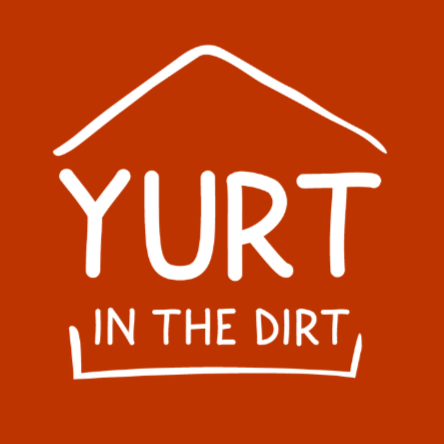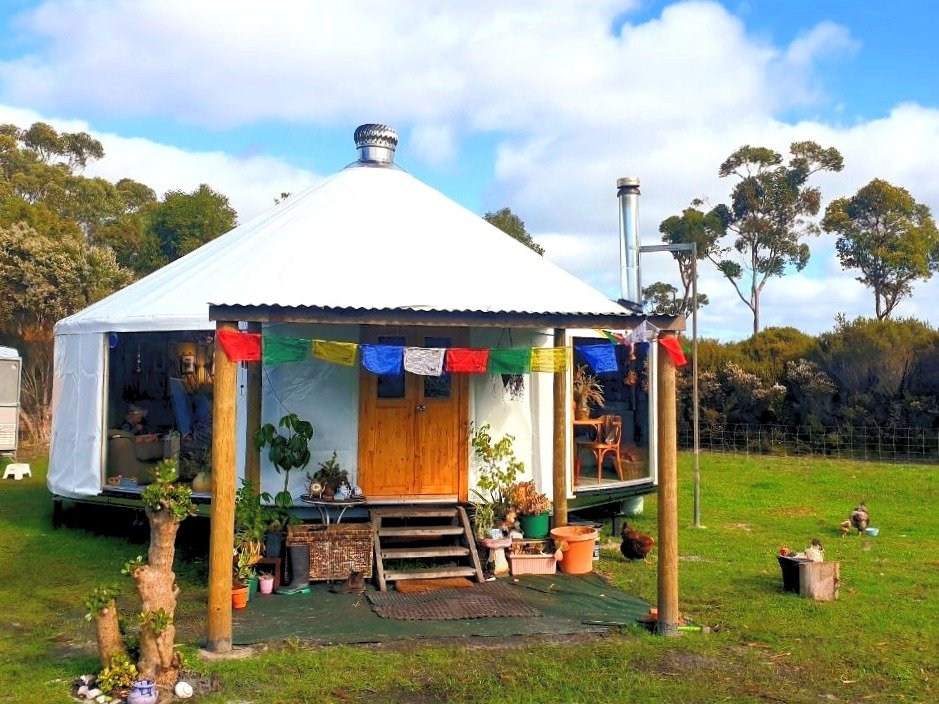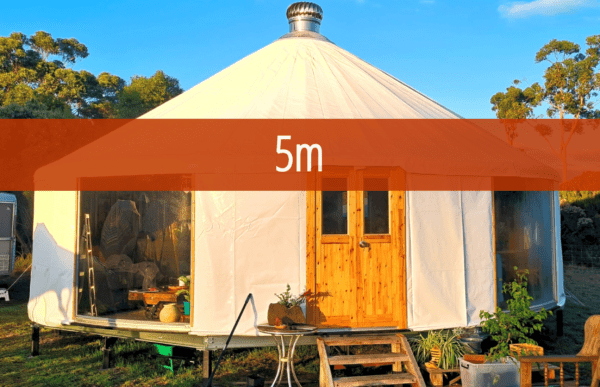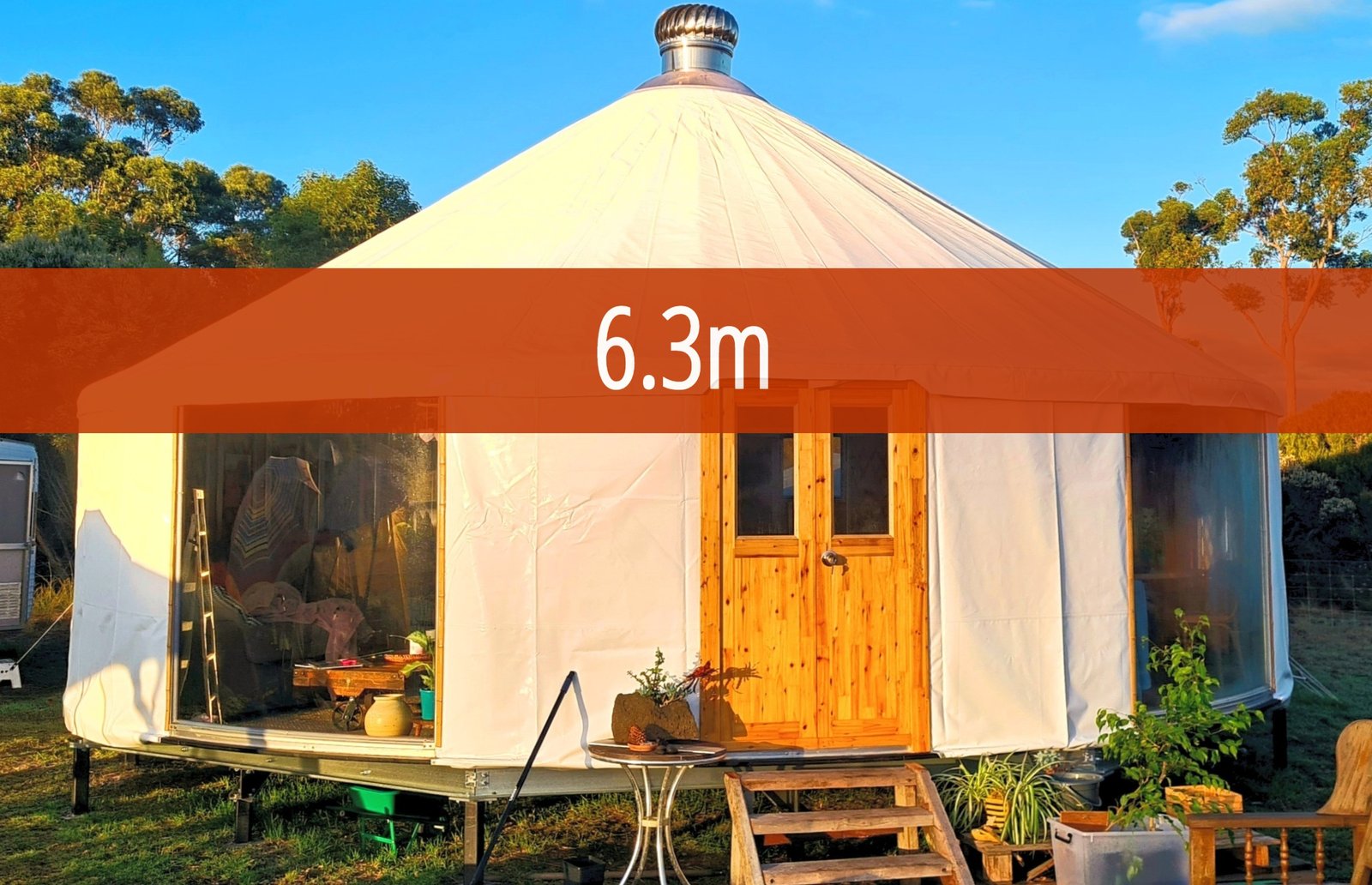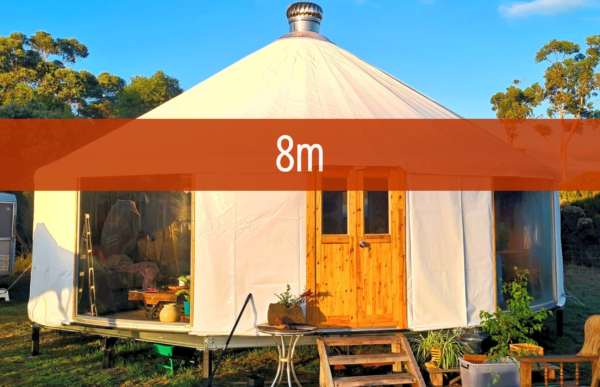The word “yurt” was derived from the Old Turkic languages to describe a “homeland” – essentially a place where you live and eat. Traditional yurts are comparable to igloos, which in the Inuit language was described as a “home built of any material”. However we know that you may have come across this article to learn more about the modernised yurts, and whether they are going to be a suitable replacement for other forms of accommodation or living spaces you may have been thinking about for your home.
Modern vs Traditional Yurts
Today’s yurts incorporate much better materials and design techniques that cater to the demands of contemporary life while still paying homage to their traditional nomadic origins. The table below goes through some of the key features of our yurts compared to traditional yurts.
| Feature | Traditional Yurts | Our Yurts |
|---|---|---|
Cover |
Traditional Yurts: Animal skins or felt, offering basic protection from elements. | Our Yurts: Durable, waterproof, UV-resistant double-coated PVC canvas for enhanced longevity and protection. |
Wall Frame |
Traditional Yurts: Wooden lattice, providing structural support and flexibility. | Our Yurts: Bamboo lattice and aluminium frames, with top and bottom aluminium channels, combining traditional flexibility with modern strength. |
Roof Frame |
Traditional Yurts: Wooden poles or bamboo, supporting the roof and central crown. | Our Yurts: Structural pine beams extend from wall frame to central supporting ring, offering robust support with a nod to traditional designs. |
Skylight |
Traditional Yurts: Typically absent, with light entering through the door or smoke hole. | Our Yurts: Clear polycarbonate dome skylight, introducing abundant natural light into the interior. |
Ventilation |
Traditional Yurts: Openings at the top (smoke hole) or through doorways. | Our Yurts: Whirly bird style ventilation, ensuring efficient airflow and expulsion of hot air and condensation. |
Windows |
Traditional Yurts: Few or none, with openings covered by fabrics for light and air. | Our Yurts: One small cantilever window of glass and aluminium, providing controlled light and ventilation. |
Door |
Traditional Yurts: Simple fabric or wooden doors, basic in design. | Our Yurts: Fir wood double door with fixed glass panels, lock and keys, blending security with aesthetic appeal. |
Insulation |
Traditional Yurts: Felt or skins used for warmth, requiring additional layers in colder climates. | Our Yurts: Felt insulation between inner lining and outer cover, optimising for warmth in winter and coolness in summer. |
Interior |
Traditional Yurts: Plain or with minimal decoration, focusing on functionality. | Our Yurts: Light coloured patterned fabric interior liner, creating a beautiful ambience inside the yurt day and night. |
Installation |
Traditional Yurts: Assembled by the community, using available materials and traditional methods. | Our Yurts: Includes anchor kit and fixings for installation; requires a suitable base structure, reflecting modern precision in setup. |
Yurts In Different Weather Conditions
Our yurts are designed with the Australian climate in mind, ensuring they stand up to the diverse weather conditions, from torrential rains to heatwaves and gusty winds.
Rain
The durable, waterproof, and UV-resistant double-coated PVC textile cover is the yurts’ first line of defense against heavy rains. This material ensures that water is effectively repelled, keeping the interior dry and comfortable, even during the most severe downpours typical of certain Australian regions.
Wind
To counteract Australia’s strong winds, the structural integrity is bolstered by a combination of bamboo lattice and aluminium frames. This blend not only provides the necessary strength to withstand gusty conditions but also maintains the yurt’s flexibility, ensuring stability and security without compromising the traditional aesthetic.
Heat
Our climate is known for being hot, and whilst a yurt is not ever going to match the insulative value of a house, it does a pretty good job at offering a cool haven, thanks to our whirly bird style ventilation system that takes advantage of any breeze to expel hot air and prevent condensation. Coupled with the felt insulation, our yurts remain pleasantly cool on the inside. For times when outside temperatures soar, you can easily install a split system aircon or other form of cooling, making them an option even for the hot and arid parts of the country.
What Yurts Can Be Used For
Yurts offer a versatile and eco-friendly solution for various needs, blending seamlessly into different landscapes and purposes. From cozy retreats to functional workspaces, the adaptability of yurts is unmatched. Here’s how the different sizes of Yurt In The Dirt’s offerings can cater to diverse applications:
4.5 Metre Yurt
Ideal for intimate settings such as personal yoga studios, home offices, or artistic retreats. Its compact size makes it perfect for a private escape or a serene garden studio, providing a peaceful haven for creativity and relaxation.
5 Metre Yurt
This 5m yurt is just a step up in size, it’s well-suited for a home office with enough room to have a study area and a lounging area. Or for a cozy couples retreat or a small teenagers hangout. It’s also easy to assemble and takes up a smaller footprint than its bigger siblings.
6.3 Metre Yurt
This slightly larger yurt is well-suited for those needing a bit more room without drastically increasing costs. It offers a comfortable balance between affordability and functionality, accommodating a small kitchenette and living area. This size is ideal for alternative accommodation, such as an air B&B or a larger personal studio, providing enough space for small group activities while still being cost-effective
8 Metre Yurt
The largest in the range, the 8m yurt is a good investment due to its size and the increased quantity of materials. It provides an expansive space with a 4m dome height that is perfect for a much larger guest accommodation (it can actually fit a small family dwelling). This size is also tall enough that you can build a mezzanine inside and have an upstairs bed. The cost is offset by the yurt’s potential to attract a higher nightly rate if using as a B&B or a glamping setup.
Yurts vs Other Accommodation
We want to give you a clear comparison between yurts and other forms of accommodation so that you can decide what works best for you. Although we are a company that specialises in selling yurts, we understand that your needs may be different. Here’s a table that summarises some of the different types of accommodation you might be considering.
Our Recommendations based on you
Given the diverse array of yurts available from Yurt In The Dirt and considering the specific needs of individuals seeking leisure, additional space, or alternative living solutions, our recommendations are tailored to align with these distinct purposes. Each yurt size offers unique advantages, making them well-suited for various applications:
Leisure
For those looking to create a leisure space, such as a yoga studio, meditation area, or art studio, the 4.5 metre yurt is an ideal choice. Its 16sqm floor area provides ample room for individual activities or small groups, ensuring a cozy, yet functional, retreat. The 2.9m dome height and the inclusion of a skylight allow for plenty of natural light, enhancing the ambiance of a peaceful getaway spot.
- Recommended Use: Yoga studio, meditation area, art studio
- Why It’s Best for Leisure: Compact size with sufficient space for personal hobbies, enhanced by natural light and easy to integrate into any backyard or natural setting.
Additional Space
For families or individuals requiring additional space, whether for a home office, a study, or a guest room, the 5 metre yurt offers a perfect balance between size and practicality. With a 20sqm floor area and a 3m dome height, it provides enough space to be comfortably furnished for various needs, without being too large to maintain or heat/cool efficiently.
- Recommended Use: Home office, guest room, study
- Why It’s Best for Additional Space: Offers a moderate amount of space without overwhelming a property, and can be easily adapted to suit changing needs over time.
Alternative Living
For those considering a yurt for alternative living, such as a semi-permanent residence or an eco-friendly housing solution, the 6.3 metre and 8 metre yurts are highly recommended. The 6.3 metre yurt, with its 31sqm floor area and 3.1m dome height, is suitable for singles or couples looking for a compact living space that still offers the comfort of a traditional home. The 8 metre yurt, boasting a 50sqm floor area and a 4m dome height, provides ample space for a family, featuring distinct areas for living, sleeping, and dining. Both sizes offer excellent insulation and the durability needed for long-term use, making them ideal for those committed to an alternative, sustainable lifestyle.
- Recommended Use: Semi-permanent residences, eco-friendly homes
- Why They’re Best for Alternative Living: Larger floor areas and heightened ceilings make these yurts suitable for full-time living, offering a balance of comfort, sustainability, and connection with nature.
